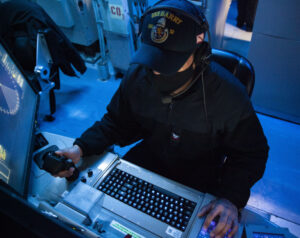
Naval Sea Systems Command (NAVSEA) has scheduled an industry day next month to overview the service’s Integrated Combat System (ICS) hardware factory program and pipeline called the Foundry. The notice, issued on Sept. 22, said the late October event will offer attendees a “programmatic overview” of the ICS hardware factor program alongside anticipated requirements in an earlier solicitation for Program Executive Office for Integrated Warfare Systems X (PEO IWS X). The earlier Sept. 5 request for information (RFI) notice explained…

 By
By 











